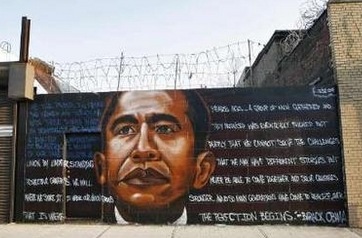Obama worked to fit in at elite school
(Agencies)
Updated: 2008-03-27 09:20
Updated: 2008-03-27 09:20
HONOLULU -- In 1971, a 10-year-old boy named Barry Obama enrolled at the private Punahou School and entered an unfamiliar world of privilege where he initially felt out of place. But he kept those feelings to himself and eventually prospered at the school.
Obama came from a modest background; suddenly his peers were the island's richest and most accomplished students. Around that time, America Online founder Steve Case, actress Kelly Preston and former Dallas Cowboys lineman Mark Tuinei attended the school, which offers kindergarten through 12th grade on a lush hillside campus overlooking the Waikiki skyline and Pacific Ocean.
|
|
Arriving after living four years in Indonesia, Obama felt like a misfit in his Indonesian sandals and old-fashioned clothes, the Democratic presidential contender recalled in his 1995 memoir, "Dreams From My Father."
Most of his classmates lived in "split-level homes with swimming pools," he wrote. Obama lived in an apartment near school and worked at a burger chain and Baskin-Robbins before graduating.
"Rarely did I meet kids whose families had less than mine and might remind me of good fortune," he wrote.
But former classmates and teachers say Barack Obama -- known then as Barry -- never revealed such feelings. They describe him as upbeat and friendly, able to move between traditional high school cliques.
"He seemed to negotiate through school very well," said Eric Kusunoki, Obama's homeroom teacher for four years.
Obama also has spoken fondly of the school. He has said Punahou's emphasis on instilling values taught him to create a foundation for his life. And he has called for every child in the nation to have the type of education he enjoyed there.
Obama's half-sister, Maya Soetoro-Ng, said the school allowed her brother to see the vast inequities in the nation's education system and push for a public school curriculum that balances "practical" with "poetic and philosophical education."
Soetoro-Ng also attended Punahou and remembered taking classes in photography and Russian literature while also learning how to write a resume.
"It was a kind of education ... where classes were small enough that each individual child got nurtured, where tests weren't as high stakes, where there were projects and papers, and the whole child was attended to," she said.
When Obama was there, the islands' most prestigious school offered a class in glass blowing, exchange trips to Japan and the opportunity to work on a literary magazine.
But Soetoro-Ng said the school also had drawbacks: It could be insular; few students came from economically underprivileged backgrounds.
In 1979, the year Obama graduated, tuition for high school students at Punahou was $1,990, a sizable expense compared with Hawaii's median family income of $22,750 that year.
Some of Obama's former classmates say they, too, felt out of place when they started at the school.
Bart Burford, who graduated with Obama, came to Punahou in sixth grade from public school and said he had a tough time adjusting to his monied peers.
"I didn't understand how people could be so snobby," the Honolulu resident said in a recent interview.
Tom Boyle, another classmate of Obama's, also came to Punahou from public school and recalled another student pointing out that his clothes didn't match.
|
||
|
||
|
|
|
|


